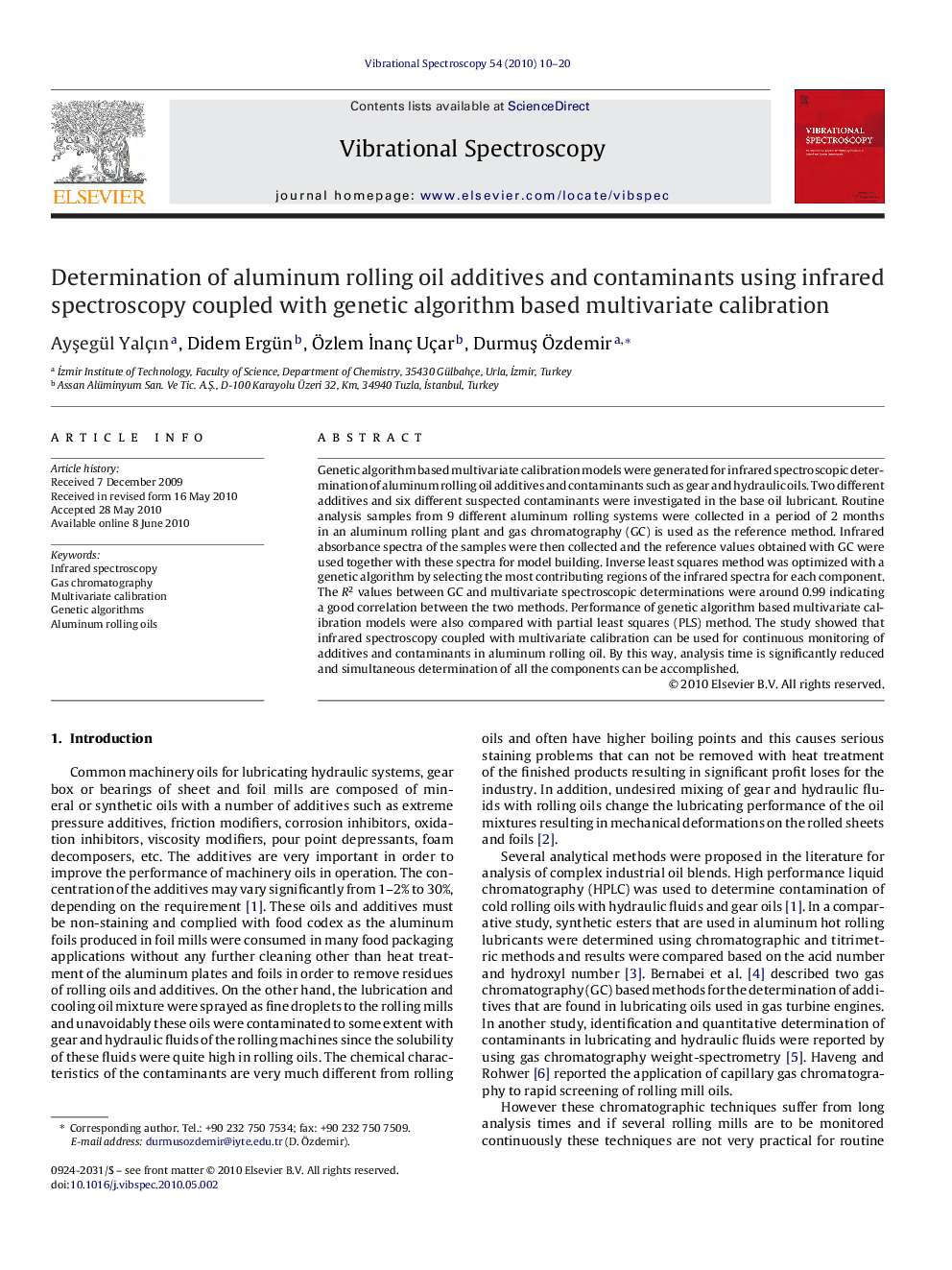| Article ID | Journal | Published Year | Pages | File Type |
|---|---|---|---|---|
| 1250310 | Vibrational Spectroscopy | 2010 | 11 Pages |
Genetic algorithm based multivariate calibration models were generated for infrared spectroscopic determination of aluminum rolling oil additives and contaminants such as gear and hydraulic oils. Two different additives and six different suspected contaminants were investigated in the base oil lubricant. Routine analysis samples from 9 different aluminum rolling systems were collected in a period of 2 months in an aluminum rolling plant and gas chromatography (GC) is used as the reference method. Infrared absorbance spectra of the samples were then collected and the reference values obtained with GC were used together with these spectra for model building. Inverse least squares method was optimized with a genetic algorithm by selecting the most contributing regions of the infrared spectra for each component. The R2 values between GC and multivariate spectroscopic determinations were around 0.99 indicating a good correlation between the two methods. Performance of genetic algorithm based multivariate calibration models were also compared with partial least squares (PLS) method. The study showed that infrared spectroscopy coupled with multivariate calibration can be used for continuous monitoring of additives and contaminants in aluminum rolling oil. By this way, analysis time is significantly reduced and simultaneous determination of all the components can be accomplished.
